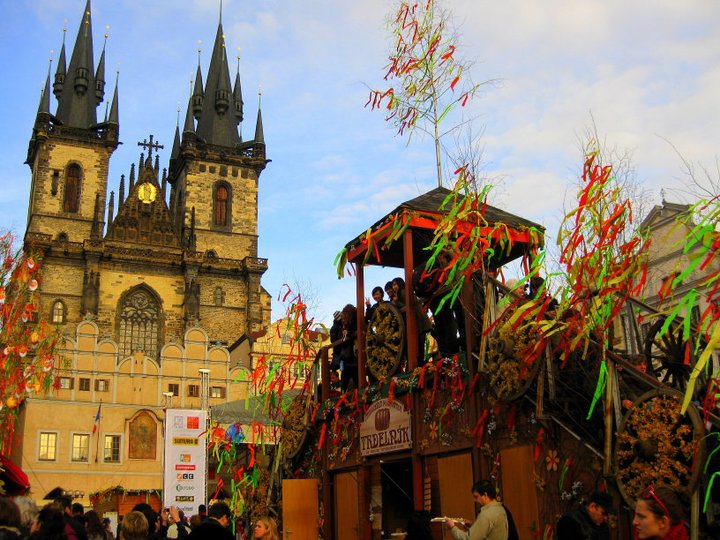
Willow switches are available in the Easter Market in the Old Town Square of Prague. Boys and young men use the switches to swat young ladies in a modern, stylized version of an ancient springtime fertility rite.
In most languages, the Christian festival of Christ’s Resurrection is known as “Pascha” or some other version of the name for “Pesach” (Passover), the Jewish feast Jesus celebrated at the Last Supper and during which he was crucified and risen. Only in English is the Christian festival called “Easter,” derived from the Anglo-Saxon goddess Eostre whose springtime feast was supplanted by that of Christ. (Estrogen and estrus and other related words are also derived from the name of the goddess as well.)
Eostre was the goddess of bounty and new life, the regeneration of nature post-winter and fertility. She was attended by rabbits (known for their prolific reproductive abilities) and decorated eggs were exchanged in her honor. (In some places, these decorated eggs were then buried in the earth as gifts to Eostre so that she could know the hopes and dreams of her children, which were depicted in the paintings on the eggs, and then fulfil them.)
A variety of practices were indulged in that were said to promote the fertility of humans and of crops, including switching young women with braided willow branches. Bonfires were a common fertility rite in the non-Christian world and St. Patrick had a major confrontation with the pagan High King of Ireland because he lit the Christian fire for Easter before the king lit the fertility bonfire nearby.
Stories of descent into the netherworld (i.e. winter) and ascent from the netherworld (i.e. spring) were told in connection with Eostre’s celebration, such as that of Persephone and Hades. The well-known “spring cleaning” of homes was part of preparing to welcome Eostre’s arrival back in the world.
